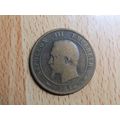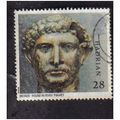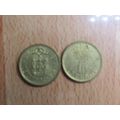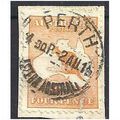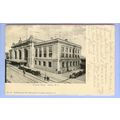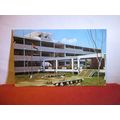Reculver, Kent - Church - government postcard real photo type c.1960s
- Condition : Used
- Dispatch : 2 Days
- Brand : None
- ID# : 128323439
- Quantity : 1 item
- Views : 346
- Location : United Kingdom

- Seller : justthebook (+1703)
- Barcode : None
- Start : Mon 19 May 2014 15:18:21 (EDT)
- Close : Run Until Sold
- Remain : Run Until Sold
Checks/Cheques
 for 1 item(s) edit
for 1 item(s) edit
Shipping Calculator
More Listings from This Seller view all
Seller's Description
- Postcard
- Picture / Image: Reculver, Kent - Church from South East - real photo type?
- Publisher: Ministry of Works
- Postally used: no
- Stamp: n/a
- Postmark(s): n/a
- Sent to: n/a
- Notes / condition: 2 small cellotape marks on reverse
Please ask if you need any other information and I will do the best I can to answer.
Image may be low res for illustrative purposes - if you need a higher definition image then please contact me and I may be able to send one.
------------------------------------------------
Postage & Packing:
UK (incl. IOM, CI & BFPO): 99p
Europe: £1.60
Rest of world (inc. USA etc): £2.75
No additional charges for more than one postcard. You can buy as many postcards from me as you like and you will just pay the fee above once. (If buying postcards with other things such as books, please contact or wait for invoice before paying).
Payment Methods:
UK - PayPal, Cheque (from UK bank) or postal order
Outside UK: PayPal ONLY (unless otherwise stated) please. NO non-UK currency checks or money orders (sorry).
NOTE: All postcards are sent in brand new stiffened envelopes which I have bought for the task. These are specially made to protect postcards and you may be able to re-use them. In addition there are other costs to sending so the above charge is not just for the stamp!
I will give a full refund if you are not fully satisfied with the postcard.
----------------------------------------------
Text from the free encyclopedia WIKIPEDIA may appear below to give a little background information (internal links may not work) :
*************
Reculver is a village and coastal resort about 3 miles (5 km) east of Herne Bay in south-east England, in a ward of the same name, in the City of Canterbury district of Kent. It is about 30 miles (48 km) east by north of the county town of Maidstone, and about 58 miles (93 km) east by south from London. Reculver once occupied a strategic location at the north-western end of the Wantsum Channel, between the Isle of Thanet and the Kent mainland. This led the Romans to build a small fort there at the time of their conquest of Britain in 43 AD, and, starting late in the 2nd century, they built a larger fort, or ""castrum"", called Regulbium, which later was part of the chain of Saxon Shore forts. The military connection resumed in the Second World War, when Barnes Wallis's bouncing bombs were tested in the sea off Reculver.
After the Romans left Britain in the early 5th century, Reculver became a landed estate of the Anglo-Saxon kings of Kent. The site of the Roman fort was given over for the establishment of a monastery dedicated to St Mary in 669 AD, and King Eadberht II of Kent was buried there in the 760s. During the Middle Ages Reculver was a thriving township with a weekly market and a yearly fair, and it was a member of the Cinque Port of Sandwich. The twin spires of the church became a landmark for mariners known as the ""Twin Sisters"", and the 19th century facade of St John's Cathedral in Parramatta, a suburb of Sydney, Australia, is a copy of that at Reculver.
Reculver declined as the Wantsum Channel silted up, and coastal erosion claimed many buildings constructed on the soft sandy cliffs. The village was largely abandoned in the late 18th century, and most of the church was demolished in the early 19th century. Protecting the ruins and the rest of Reculver from erosion is an ongoing challenge.
The 20th century saw a revival as a tourism industry developed and there are now three caravan parks. The census of 2001 recorded 135 people in the Reculver area, nearly a quarter of whom were in caravans at the time. Reculver Country Park is a Special Protection Area and Site of Special Scientific Interest, which has rare clifftop meadows and is important for migrating birds.
After the Roman occupation of Britain ended in about 410, Reculver became a landed estate of the Anglo-Saxon kings of Kent, possibly with a royal toll-station or a ""significant coastal trading settlement,""[28] given the types and quantity of coins found there.[28][Fn 6] Other early Anglo-Saxon items found at Reculver include a fragment of a gilt bronze brooch, or ""fibula"", which was originally circular and set with coloured stones or glass,[29][Fn 7] a claw beaker,[31] and pottery.[32] King Æthelberht of Kent was traditionally said to have moved his royal court there from Canterbury in about 597, for example by John Duncombe in 1784,[33] and to have built a palace on the site of the Roman ruins;[34] but archaeological excavation has shown no evidence of this, and the story has been described as probably a ""pious legend"".[35][Fn 8] A church was built on the site of the Roman fort in about 669, when King Ecgberht of Kent granted land for the foundation of a monastery there, which was dedicated to St Mary.[36]
The monastery developed as the centre of a ""large estate, a manor and a parish"",[35] and, by the early 9th century, it had become ""extremely wealthy"",[37] but it then fell under the control of the archbishops of Canterbury.[38] By the 10th century the church and the estate were in the hands of the kings of Wessex, though the church may have remained a monastery, despite the likelihood of Viking attacks.[39] The church and the estate were given back to the archbishops of Canterbury in 949 by King Eadred of England, at which time the estate centred on Reculver included Hoath, Herne and land in the west of the Isle of Thanet.[40]
By 1066 the monastery had become a parish church.[40] However, in 1086 Reculver was named in Domesday Book as a hundred, with the estate centred on Reculver valued at £42.7s. (£42.35);[41] and, in the 13th century, the parish of Reculver remained one of ""exceptional wealth"".[42] The church building was extended considerably during the Middle Ages, including the addition of the towers in the 12th century,[43] indicating that the settlement at Reculver had become a ""thriving township"",[35] with ""dozens of houses"".[44][Fn 9] The parish was broken up in 1310, when chapelries at Herne and, on the Isle of Thanet, St Nicholas-at-Wade and All Saints were converted into parishes, though Hoath was still a perpetual curacy belonging to Reculver parish in the 19th century.[46] Records for the poll tax of 1377 show that there were then 364 individuals of 14 years and above, not including ""honest beggars"", in the reduced parish of Reculver.[47][Fn 10]
type=real photographic (rp)
theme=topographical: british
sub-theme=england
county/ country=kent
number of items=single
period=1945 - present
postage condition=unposted
Listing Information
| Listing Type | Gallery Listing |
| Listing ID# | 128323439 |
| Start Time | Mon 19 May 2014 15:18:21 (EDT) |
| Close Time | Run Until Sold |
| Starting Bid | Fixed Price (no bidding) |
| Item Condition | Used |
| Bids | 0 |
| Views | 346 |
| Dispatch Time | 2 Days |
| Quantity | 1 |
| Location | United Kingdom |
| Auto Extend | No |











